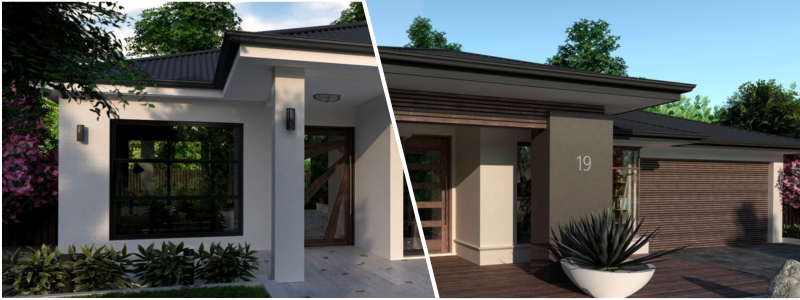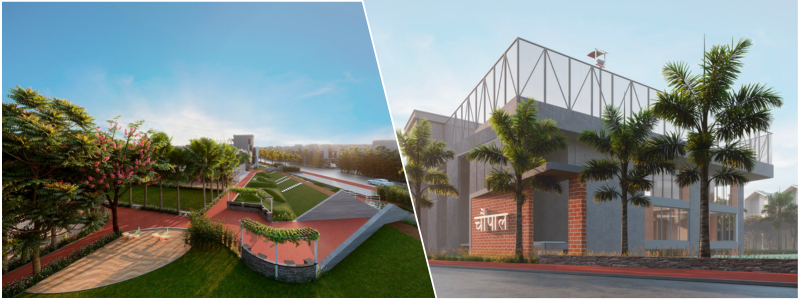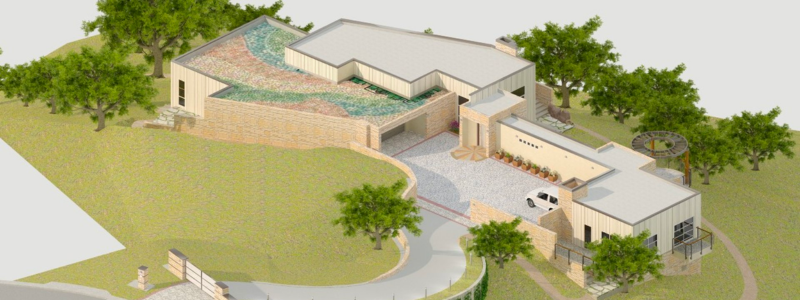Not all real estate rendering content is produced professionally, especially when 3D renders are concerned. A 3D rendering designer can achieve optimal angles for your images to enhance your real estate listings.
Unlike traditional photo shoots, 3D rendering projects require constant communication between the 3D real estate rendering designer and the client to achieve optimal results. You should be able to communicate your requirements to the 3D real estate rendering service for optimal satisfaction.
 Table of contents
Table of contents
- Important elements of effective real estate rendering
- What's involved in the 3D real estate rendering process?
- Best camera angles for real estate rendering projects
- Summary
- Find the best angle for the tone and style of your brand
Important elements of effective real estate rendering
Camera angles are essential in real estate rendering, serving as the lifeblood that breathes life into 3D graphics. These angles offer different perspectives that provide more dimension and depth to architectural designs to produce an immersive and convincing exterior view. Using various angles is a unique method that requires meticulous execution to showcase architectural designs in the best light possible.
For example, an aerial or bird-view angle can show a broader structure context. This provides a more encompassing layout that goes well with the finer details of the design. Alternatively, a ground-level angle provides a viewer’s perspective that captures the experience of the person standing right before the structure. The interaction with ambient lighting can enrich the perspectives further, casting highlights and shadows that make the visuals look more realistic.
However, combining a high degree of artistry and technical know-how is essential to achieve these effects. This emphasizes the importance of working with the best 3D real estate rendering studio with professional CGI artists who can produce photorealistic renderings. A reliable 3D real estate rendering company understands subtle nuances of texture, perspective, and light to ensure that every rendering will convey the architect’s vision with aesthetic elegance and notable precision.

The introduction of CGI in real estate visualization has changed exterior presentations in more ways than one. Different angles of architectural designs are now brought to life with the help of CGI to create more realistic and immersive renderings. This unique combination of 3D rendering services and 3D architectural visualization services allows a more encompassing exploration of different designs to convey even the most complex details with outstanding precision.
CGI technology works great at presenting architectural elements, lighting, and textures to leave a long-lasting impression on the viewers. CGI offers engaging and dynamic visualizations by covering various exterior rendering requirements. It doesn’t matter if it is an aerial or eye-level view; CGI can easily incorporate all the angles to improve an architectural presentation further. With CGI being significantly versatile, designers can create more interactive and vivid experiences that evoke emotions and capture the true essence of different architectural concepts.
RELATED: CGI design costs, freelancer rates, and designer service pricing for your company
What’s involved in the 3D real estate rendering process?
Before you ask about a 3D real estate rendering project, you first need to know precisely what you want to go into it and the specific part or role you will play during the process.
The following are the critical steps in developing 3D real estate rendering:
- Start with initial plans to determine the right camera angles.
- Come up with the 3D grey geometry.
- Apply environmental lighting and texture.
- Incorporate the interior design and the finishing details.
Clients must know the steps required to develop 3D real estate renderings to outline the final real estate rendering project.
Best camera angles for real estate rendering projects

Now that you’ve got a good idea of what’s involved in the 3D real estate rendering process, the following are the most optimal camera angles you can consider for your next project:
Bird’s-eye or aerial view of architecture
Architectural buildings can be seen from an aerial, also known as a bird’s eye view, from above and below. These images can be taken by a helicopter or a drone or by 3D aerial design services. Aerial imagery is the finest method of showcasing a lofty structure in its full glory. Aside from this, the spectator can also get an idea of how the structure would fit in the entire neighborhood and its immediate surroundings. This angle highlights the exterior, regardless of whether the architect plans to make it stick out or blend in.
However, it is an expensive and time-consuming process to prepare a background for these 3D aerial perspectives. Opting for a photo montage rendering is the best choice. It can offer a photorealistic render of an up-and-coming building or several buildings that smoothly merge with a drone’s real-world photo of the surrounding environment. It results in a wonderfully realistic representation of the building while saving money and time.
A bird’s eye view provides the perfect angle for presenting a concept of neighbor districts, a huge building, or several buildings such as a resort or residential compound.
Vignette or close-up
A close-up view or vignette is another angle you can use to depict external architecture depiction. There are two main benefits of using close-up perspectives. For one, they start by offering more details regarding the design, materials, and other selling points that far-off views won’t be able to show.
Second, this particular angle allows viewers to connect more emotionally with the project. By focusing on the features of the architecture, observers can envision themselves almost touching the external surface and experiencing the area more personally. While close-up images might not perform individually, these are fantastic additions to renderings captured from a distance.
RELATED: Virtual staging costs, service fees & architectural pricing for real estate companies
Eye-level or hero view
This next angle of exterior representation shows the structure as it would look to the eye of pedestrians. This perspective gives spectators the best means of understanding how they will perceive the structure when they enter or pass it. As a result, it is often a wise idea to add people, vehicles, and more auxiliary elements in this architectural depiction. The natural angle gives more atmosphere and life to the scene.
But there is a chance that a colossal building wouldn’t entirely fit in an eye-level depiction, so several renders are required to showcase the entire project. This angle is recommended for shopping areas, luxury real estate developments, and residential projects.
Site plan or master plan view
Architectural site plan design services offer an ideal depiction of the arrangement of landscaping, streets, parking, buildings, and other visual aspects of development projects. A master plan view generally showcases a set of housing units on an urban scale. It is essential to show the potential appearance of the real estate design in its actual environment, whether its purpose is to make the building blend in or stand out from its surroundings. A master plan view would be an ideal tool for city developments and urban architects.

Elevated or semi-aerial view
The elevated view is another angle real estate rendering services use to enhance property listings. This is a straightforward way to create a more thorough presentation of the project to show the building from a certain distance. This perspective allows you to show more of the area. Through this, the viewer can see how well the exterior will work with the nearby structures and the location as a whole. You may find this angle helpful if you want to show around the landscaping and development properties.
Worm’s eye view
In real estate rendering, a worm’s eye view is an angle from a lower vantage point and looks upwards. It is an angle that comes in handy if you want to emphasize the grandeur and height of a building. This can also induce an emotional impact as it portrays the structure as an impressive and towering entity that stands tall against the vast sky.
Summary
These are the five frequently used angles for real estate rendering services that can cover your real estate project’s requirements. All of these tasks can benefit from CGI, whether you wish to enlighten your audience regarding the surroundings and design of your building, amaze them with its grandeur, or create highlights that evoke emotions.
RELATED: 3D rendering for marketing real estate: What it is and how it can improve your real estate business
Find the best angle for the tone and style of your brand
It’s essential to research options and keep an open line of communication with your chosen 3D real estate rendering service provider to decide on the best angles that suit your real estate renderings. Always remember that each development is distinct and requires careful preparation and thinking before you finalize the perspectives.
Cad Crowd is a platform where you can select reliable services you can count on to deliver top-of-the-line real estate renders that use the most optimal angles.
